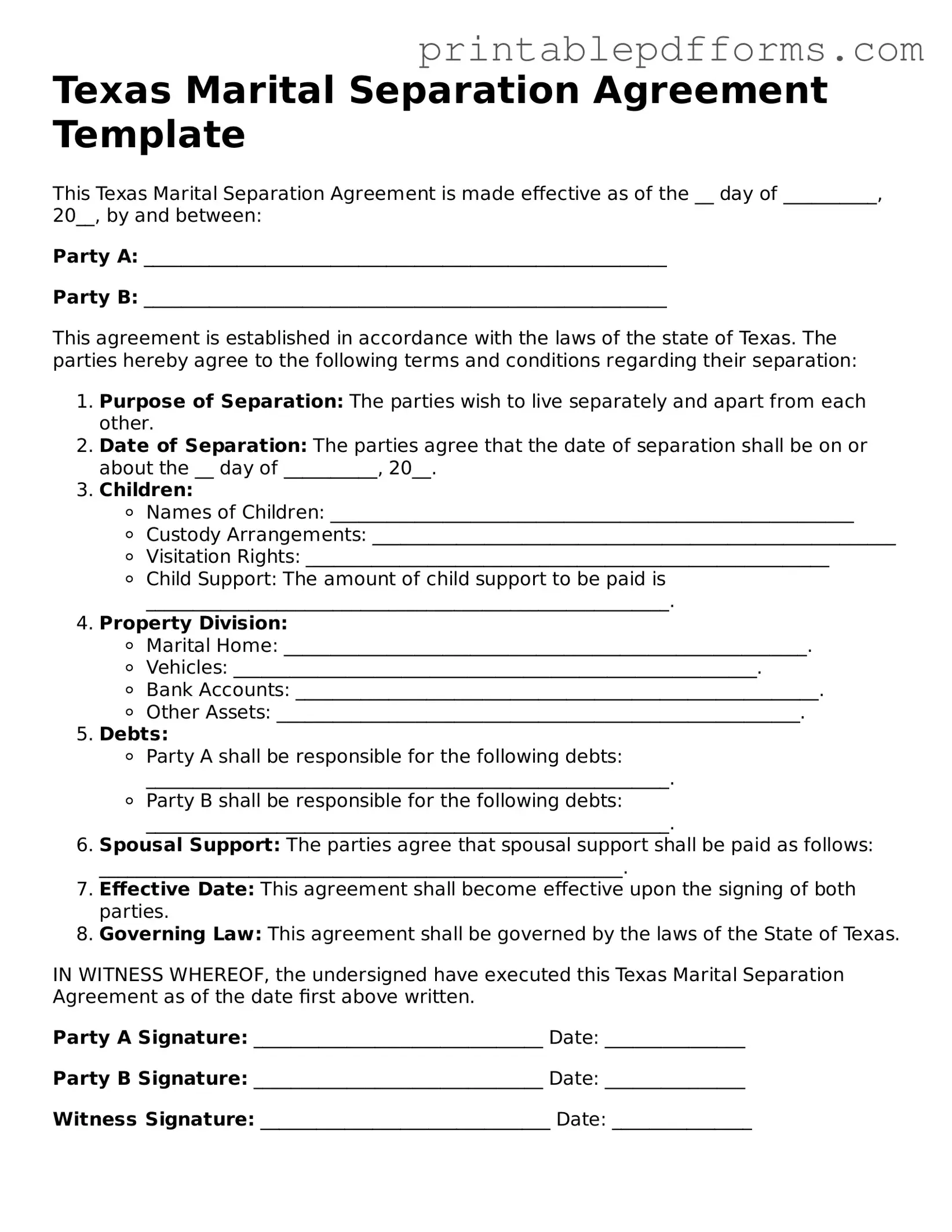Texas Marital Separation Agreement Template
This Texas Marital Separation Agreement is made effective as of the __ day of __________, 20__, by and between:
Party A: ________________________________________________________
Party B: ________________________________________________________
This agreement is established in accordance with the laws of the state of Texas. The parties hereby agree to the following terms and conditions regarding their separation:
- Purpose of Separation: The parties wish to live separately and apart from each other.
- Date of Separation: The parties agree that the date of separation shall be on or about the __ day of __________, 20__.
- Children:
- Names of Children: ________________________________________________________
- Custody Arrangements: ________________________________________________________
- Visitation Rights: ________________________________________________________
- Child Support: The amount of child support to be paid is ________________________________________________________.
- Property Division:
- Marital Home: ________________________________________________________.
- Vehicles: ________________________________________________________.
- Bank Accounts: ________________________________________________________.
- Other Assets: ________________________________________________________.
- Debts:
- Party A shall be responsible for the following debts: ________________________________________________________.
- Party B shall be responsible for the following debts: ________________________________________________________.
- Spousal Support: The parties agree that spousal support shall be paid as follows: ________________________________________________________.
- Effective Date: This agreement shall become effective upon the signing of both parties.
- Governing Law: This agreement shall be governed by the laws of the State of Texas.
IN WITNESS WHEREOF, the undersigned have executed this Texas Marital Separation Agreement as of the date first above written.
Party A Signature: _______________________________ Date: _______________
Party B Signature: _______________________________ Date: _______________
Witness Signature: _______________________________ Date: _______________
